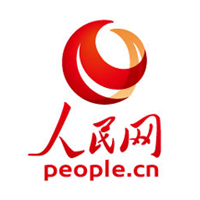According to South Korean media reports, the South Korean Defense Agency recently held the 161st meeting of the Defense Promotion Committee in the building of the Ministry of Defense. The meeting decided that from 2025 to 2030, South Korea will invest 803.9 billion won (about 600 million US dollars) to introduce the "Standard - 3" (SM-3) missile to intercept ballistic missiles with a height of more than 500 kilometers.
In recent years, the South Korean military has been strengthening the "South Korean three-axis system" composed of "kill chain", "South Korean missile defense system" and "large-scale punishment and retaliation plan". Among them, "Korean missile defense system" refers to a composite multi-layer defense system that detects and intercepts multiple incoming missiles, including ballistic missile multi-layer defense system and long-range artillery response system. In terms of land-based air defense and antimissile systems, South Korea is improving the performance of the existing "Patriot" missiles and increasing the number of interceptors, developing the domestic missile interception system "Tiangong - II", promoting the performance improvement of the L-SAM long-range ground to air missile interception system and the Korean version of the "Iron Dome" defense system, with the aim of gradually strengthening the composite multi-layer defense capability. At the same time, under the ROK US joint defense system, the ROK has strengthened the interoperability of its missile defense system with the US military stationed in the ROK to develop the joint response capability of the ROK US alliance. In addition, due to the small area of the Korean Peninsula and the lack of strategic depth, South Korea's main threat does not come from the sea, and its development urgency in sea based anti missile capability is relatively low.
The "Standard-3" missile has been jointly developed by the United States and Japan since 2006 and is designed to solve the problem of anti missile at sea. The missile has been tested several times and its technology is relatively mature. Its main purpose is to intercept long-range and even intercontinental ballistic missiles coming from high altitude in the middle, so it is called "Sea Sade". In the past, considering the strong anti Japanese sentiment in China, South Korea did not cooperate with Japan to participate in the R&D of the "Standard-3" project. At the same time, South Korea once denied the possibility of introducing the "Standard - 3" missile because it feared that the introduction of the "Standard - 3" missile might cause disputes at home and abroad over South Korea's participation in the US - led missile defense system.
However, the South Korean military has actually been pushing for the introduction of the "Standard - 3" missile. In October 2013, the Korean Army first proposed the purchase intention, and the then Defense Minister Jin Kuanzhen said that "multi-layer missile defense system needs to be studied". The South Korean Ministry of Defense also reported to the National Defense Commission that the "Standard - 3" missile can complement the "Patriot" missile system to improve defense capabilities. In 2016, after South Korea decided to deploy the "THAAD" anti missile system, it began to work out a plan to introduce the "Standard-3" missile, and formally decided to introduce it at the 320th Joint Staff Meeting in September 2017, and then launched relevant research in January 2018.
At present, the Korean Army is vigorously improving its maritime combat capability and developing the next generation of Aegis destroyers. According to the estimate of the unit price of the US made "Standard 3" missiles of 20 billion won, the Korean Army will purchase 40 missiles this time, which will be equipped on the South Korean Navy's "Aegis" destroyer. The South Korean Defense Agency said it hoped to effectively deal with the ballistic missile threat through this project.
From the perspective of the global strategic layout of the United States, the "Standard-3" missile is the core interceptor of its sea based national missile defense system. By deploying long-range antimissile weapons on warships, the United States has expanded its antimissile firepower network as far as possible, and even directly deployed it to the sea area near potential adversaries to improve the effectiveness of its antimissile system. In recent years, the United States has accelerated the improvement of the anti missile defense network in the Asia Pacific region, which is composed of sea based and land-based defense systems. Its system construction focuses mainly on Japan. In August 2019, the United States signed an arms sales contract with Japan, and Japan has purchased 73 "Standard - 3" missiles from the United States, with a total price of 3.295 billion dollars. However, Japan lacks the early warning and detection system required by the missile defense system, and South Korea's participation can supplement the intelligence resources of the US anti missile system to a certain extent.
At present, the "Standard - 3" missile of the United States is mainly equipped with an improved Allie Burke class destroyer and a Ticonderoga class cruiser. Japan has specially built a new Aidang class destroyer to carry the "Standard - 3" missile. The first ship of the second batch of destroyers in the KDX - Ⅲ plan of South Korea, "Zhengzu Dawang", has been launched. At the same time, South Korea is also accelerating the development of the next generation KDDX destroyers, which will be equipped with a new type of "Aegis" missile defense system, that is, "Standard - 3" missiles.
Analysts pointed out that South Korea's purchase of the "Standard - 3" missile will further tie itself to the United States' chariot and become an important part of the United States' strategy of pursuing the so-called "great power competition". As the United States, Japan and South Korea launch joint operations with the "Aegis" destroyer carrying the "Standard - 3" missile, it may further intensify the regional arms race. (Chen Yue)
(Editor in charge: Chen Yu, Liu Yuanyuan)
Share to let more people see




































